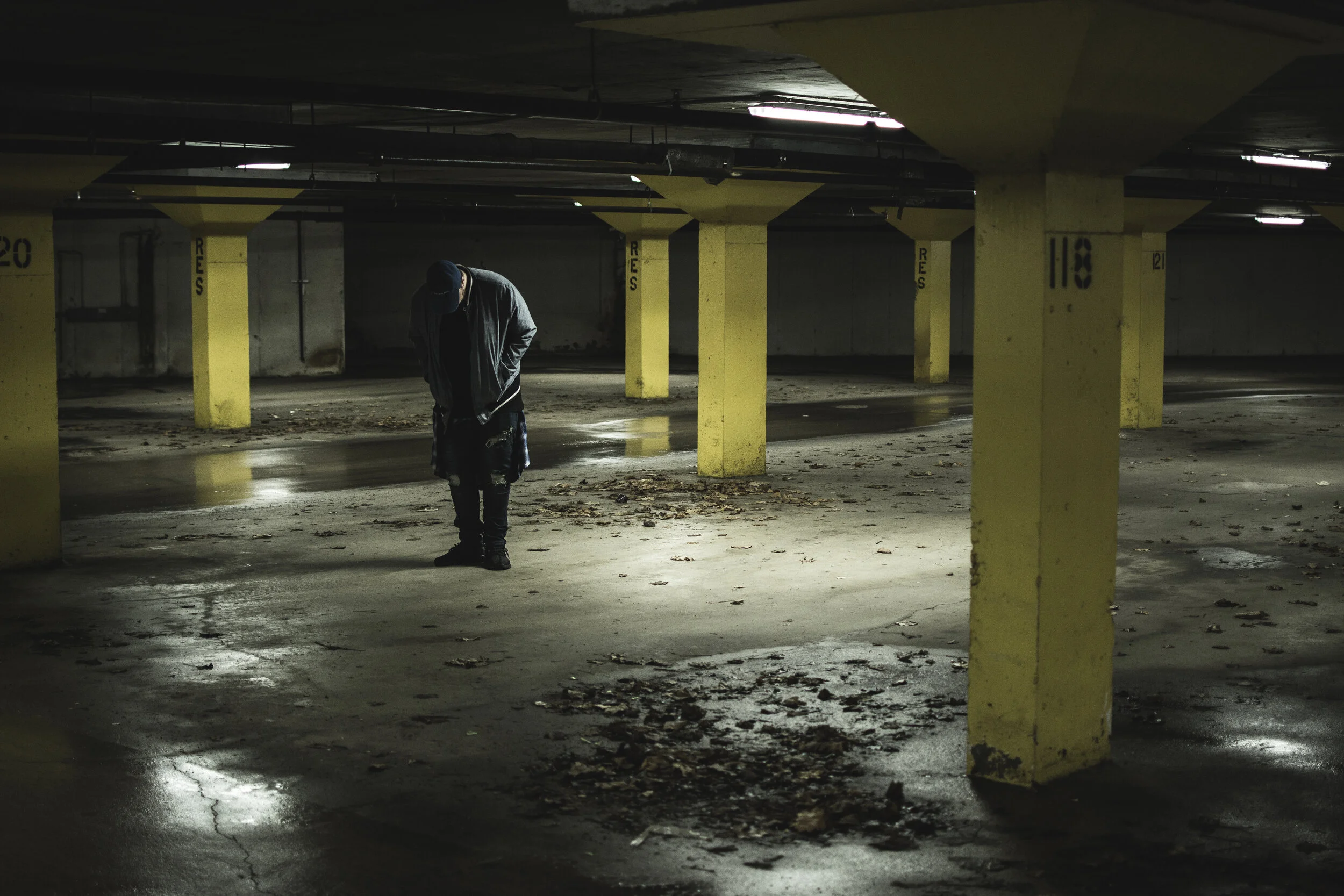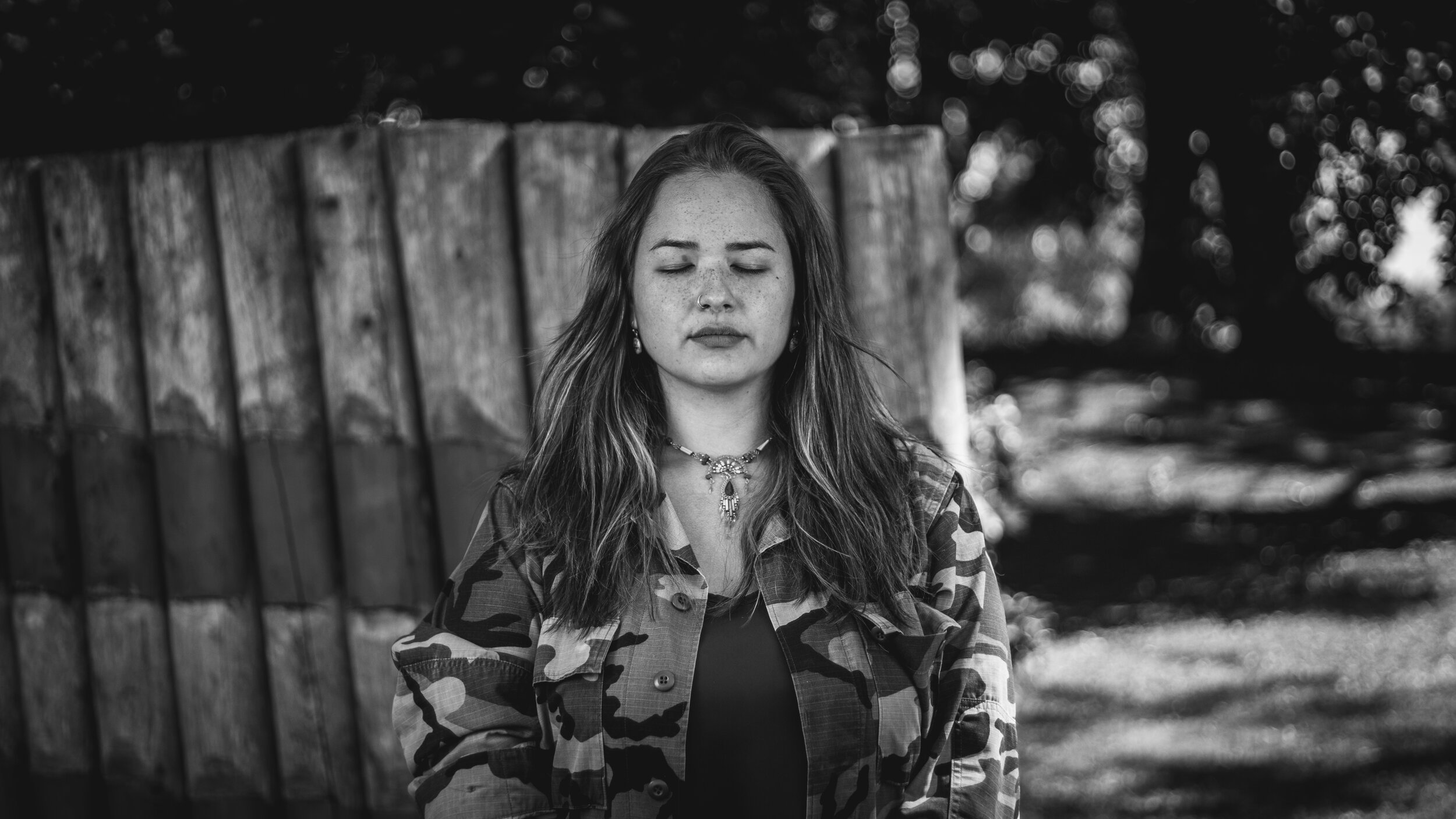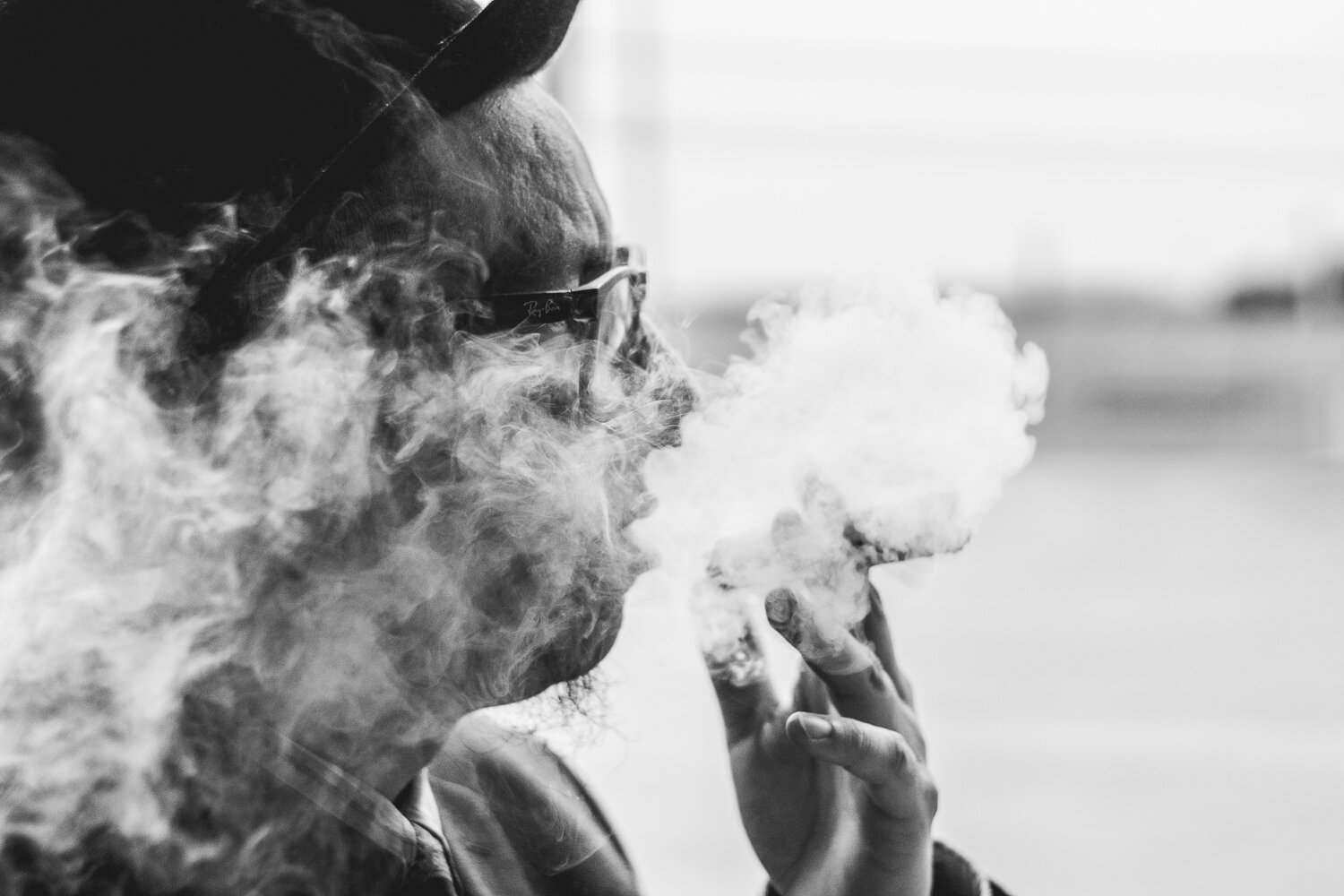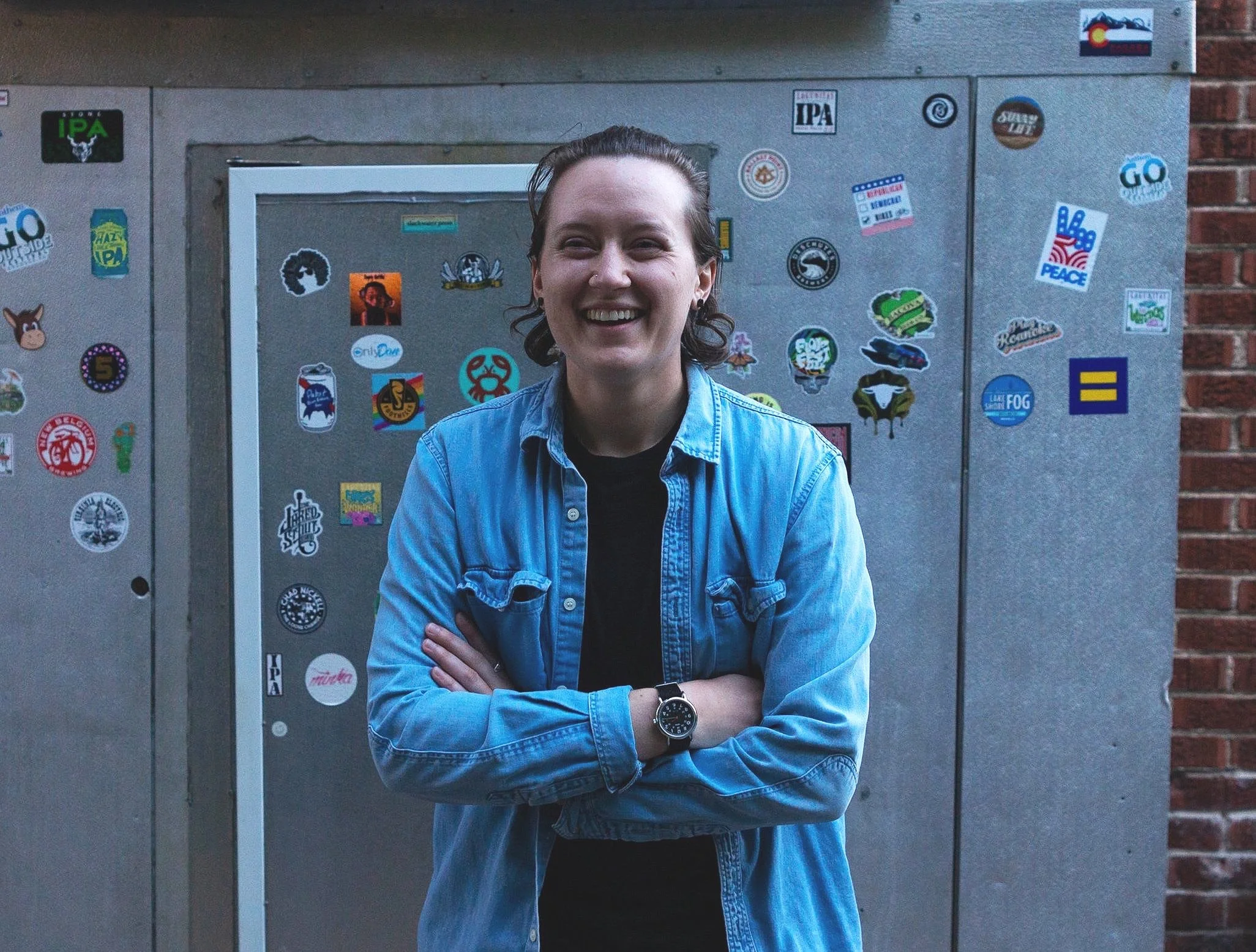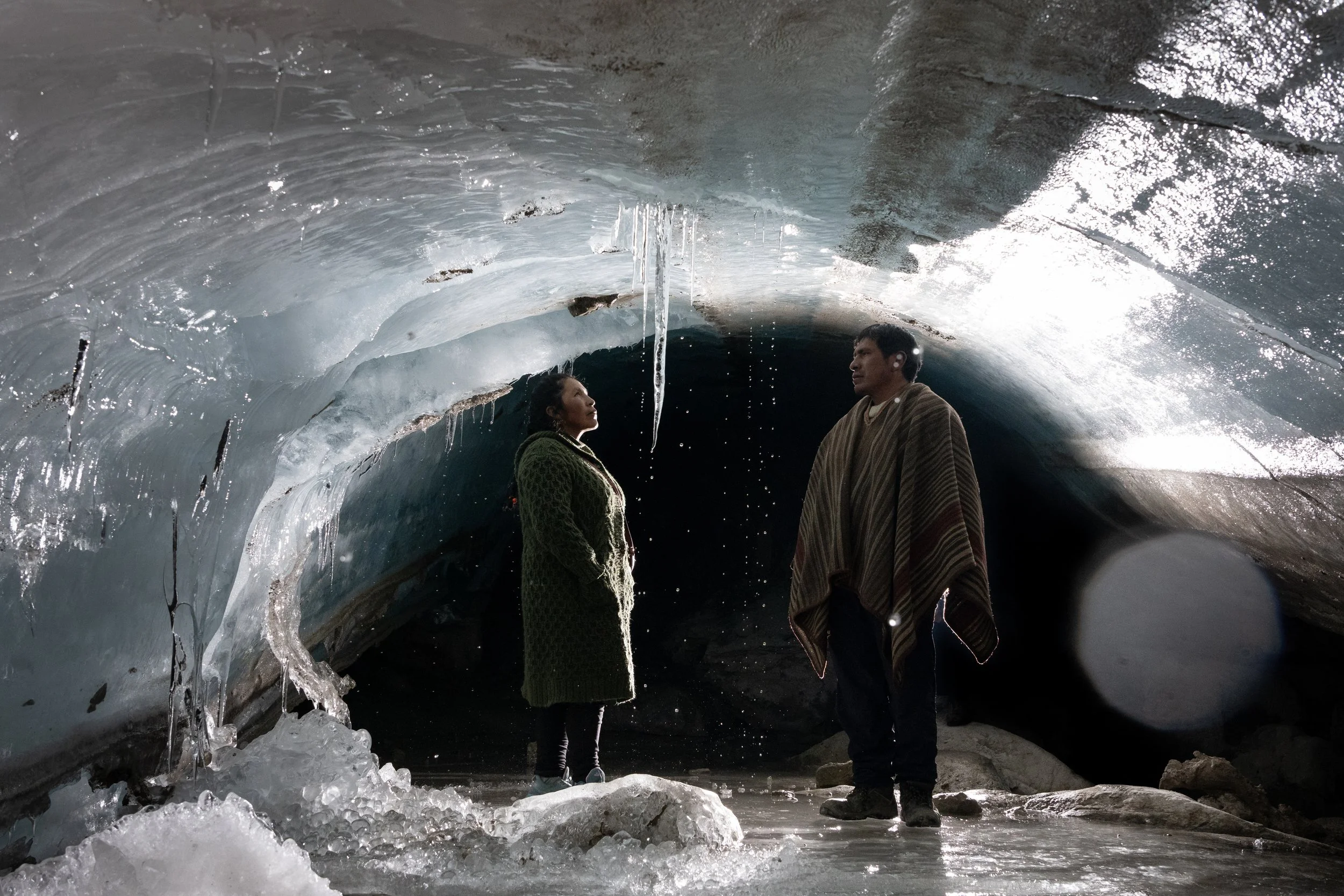“Monument”
Photo by Ian Maracle
Emerging Indigenous artist Ian Maracle is from Six Nations, Ontario, and currently resides in Brantford, Ontario. His story is rooted in the experiences and struggles of his family and ancestors; his grandfather was a product of residential schools founded by the Canadian government, and his grandmother was a product of a strict Christian upbringing. His uncles and mother experienced physical and emotional abuse as children, but as time passed and they grew into adults, they were able to move past the hurt and pain. Due to their sacrifices, Maracle and his cousins were able to grow and thrive in an environment full of kindness and love. Maracle’s mother went out of her way to expose him to the world outside of the reserve, and he has many fond memories of his childhood.
Maracle has always been interested in the arts, and at the age of eight, he aspired to be a chef. After graduating from culinary school and working a few years in the industry, he made the difficult decision to leave the culinary world. with his creative outlet gone, he was unsure of what to pursue. He had started writing short stories and poetry, and eventually enrolled at Mohawk College and began a career in advertising and copywriting. While navigating his newfound vocation, Maracle picked up a camera. “I started snapping pictures, they weren't high quality, but it was something that I enjoyed.”
Maracle strives to set his work apart by showing the world that not only is he an Indigenous artist, but he is also just an artist. He wants to inspire Indigenous youth to strive for more in each and every aspect of their life. Maracle says, “I feel that my worth as an artist doesn't come from my background, but it does come from my blood. I want native youth to stand up to tokenism and blossom as artists in their own right and to understand that their lived experience is what makes their work Indigenous.”
In a recent interview, PWB caught up with Maracle to find out what makes him more than a photographer.
“Peace”
Photo by Ian Maracle
PWB: What led you to photography?
Ian Maracle: I just picked up a camera, it was of interest to me. I enjoyed it, but it was something that I’ve always hidden from my friends. In the neighbourhood I grew up in it was not accepted. They did not embrace that sort of thing, they were not accepting of the arts in general, my friends never explored things outside of the norm, so they would say “you’re a loser,” that was the attitude they had. And when you grow up in that realm you’re scared to embrace those things, so I remember being 19 or 20 with my first camera phone hanging out with my friends, and I would sneak pictures because I didn’t want to be ostracized from my social group. When I was 25, I went back to school, and I was like “f*** this,” I’m just going to be who I want, so I picked up a camera and I started shooting around, that was around 2012, and I didn’t look back. I embraced creativity fully.
I started getting really big jobs and people were loving it, and I got to photograph people I looked up to as a child. There is a guy named Murray Porter, he is an Indigenous musician and my grandmother used to own a craft shop when I was little, and she used to play his music on CDs in the craft store. So to photograph him, I was like “wow, he’s a res legend.” It feels so good to be here, I’ve worked so hard since 2012 to accomplish [what I have]. I have sacrificed a lot, I’ve sacrificed time with my son and my family, to achieve these things, I don’t know if it was the right course of action, but I feel fulfilled in that regard. My relationship with my son and family is good, but sometimes I regret I missed 4-9 pm for him, and that’s a really crucial spot. I still saw him but I didn’t see him as often as I should have. I do have regrets in that regard, but I am happy with how things are, I sacrificed a lot to get where I am, and now that I am here, it feels good, I feel like I’ve accomplished something.
“Jut”
Photo by Ian Maracle
PWB: What makes you more than a photographer?
IM: Anyone can pick up a camera and snap an image, it's not a unique skill. It’s what you snap, that’s important because as a photographer you’re not just a picture taker, you are a storyteller, and when I’m not shooting a portrait or something traditional for myself, that is what I aim for. (…) I want people to look at an image and take something from it. Some of my favourite work that I’ve ever shot has been portraits and landscapes and they each tell something, they each communicate, and maybe they don’t tell a story, but maybe they communicate a certain emotion, a certain concept; communication is very much embedded in photography and that is how I approach it. I want to communicate something, it doesn't always have to be a narrative like I said, it can be an emotion. In my work, I always strive to get that genuine emotion because that is how you get people to look at your stuff. [...] I’m able to create work that people resonant with, and when I'm old and grey I want to look back on my work and say that's my legacy, it’s work that matters, it’s work that people connect with, and it`s work that says something. I also wanted to give back to my community; I take those skills as a photographer and apply them to so many different aspects of my life, and to help my community makes me more than a guy with a camera.
Photo by Ian Maracle
PWB: How has your work as a photographer connected you to your community? To the world?
IM: I hosted a workshop two summers ago with at-risk youth, I worked with Six Nations Mental Health Services, and we hosted a nine-week summer workshop. These kids were suicidal, they weren't in a good place, I put this lesson plan together, (the organization) bought cameras. I got to sit with these kids, not all of them were super receptive, they had 21 youth, there were seven or eight students that really got into it, and even if it's only a handful of kids, it's still doing something for the community, it shows them that there is hope in doing the arts. There is still that attitude in Six Nations where the arts are still looked down on, as important as they are within aboriginal culture they are still looked down upon. To give them that hope, and inspiration, and that positive path to look forward to, it felt really good to do that, and that’s what I want to do, I want to create work that resonates with people, and helps my community in some regard.
Photo by Ian Maracle
PWB: What does storytelling mean to you?
IM: Storytelling is having something that is lasting. For me culturally, storytelling is important because it's such a huge part of our culture, it's all oral tradition, we had very little written words; we had pictography. We didn't have books, everything was traditionally told through storytelling from person to person, and it was passed down through generation to generation. Storytelling to me is not only a way to express a creative narrative; it is also a way to pass knowledge down. Storytelling is an important thing to keep up because you need that hub; it is a hub of knowledge. Photography, beyond taking a picture of someone or something, can communicate so many different ideas and concepts, and when someone sees that they can apply those concepts to their own work or to their own life. It's that transition of knowledge from one person to another.
PWB: Are you currently working on any projects would you like to share?
IM: I have been doing a lot of behind the scenes work and production stills for [Santee Smith], and through her, I have met a lot of dancers, and working in theatre and dance have been this crazy weird experience. You learn things and experience things on the stage that you don’t really encounter everywhere else. Santee Smith mentioned that theatre is still whitewashed, and it is hard to get aboriginal content produced. That sparked this idea in me to reach out to some of these aboriginal dancers around Canada, I kind of wanted to explore the idea and what the experiences of these interpretive dancers were working within that world, and I wanted them to express their pain and emotion and hardships, and trials through interpretive dance. I`ve reached out to six dancers and they've all been receptive to composing a piece strictly for this project, and the idea is to go and photograph them. It would be a great take on Indigenous artists in a contemporary dance world and use dance as a way to express how they feel, I would like to pitch that series to a gallery.
“Drench”
Photo by Ian Maracle
PWB: What are you doing when you're not taking pictures?
IM: Family-focused stuff; I have a five-month-old daughter, a son that is 11, we’re a mixed family, my wife brings a son of three. As of late I’ve been spending time with my family, because now I have the ability to do it, and watch them grow, and that was something that I wasn’t afforded when my son was born, but now I have the time to spend with my family, and it feels great. Right now, it's all about strengthening relationships with my kids and wife, building my home, helping out around the house, and living my life.
Photo by Ian Maracle
PWB: Do you have any advice for new photographers?
IM: I still look at my old Nikon camera and say “wow the places this camera has taken me.” My camera has taken me to so many different places and I couldn’t be more grateful. My philosophy is that a good photographer can take a picture on anything, you don't have to have the best gear, you don't have to have the latest stuff, it's your content that matters, it's crafting a narrative. My advice for new folx getting into photography - don’t worry about your equipment, focus on your storytelling, focus on your narrative, focus on your composition, focus on all of the other things that matter, gear is secondary to that.
Ian Maracle is one of the nine photographers showcased in PWB’s exhibition “Original Perspectives” held digitally as part of CONTACT, North America's largest photography festival.


